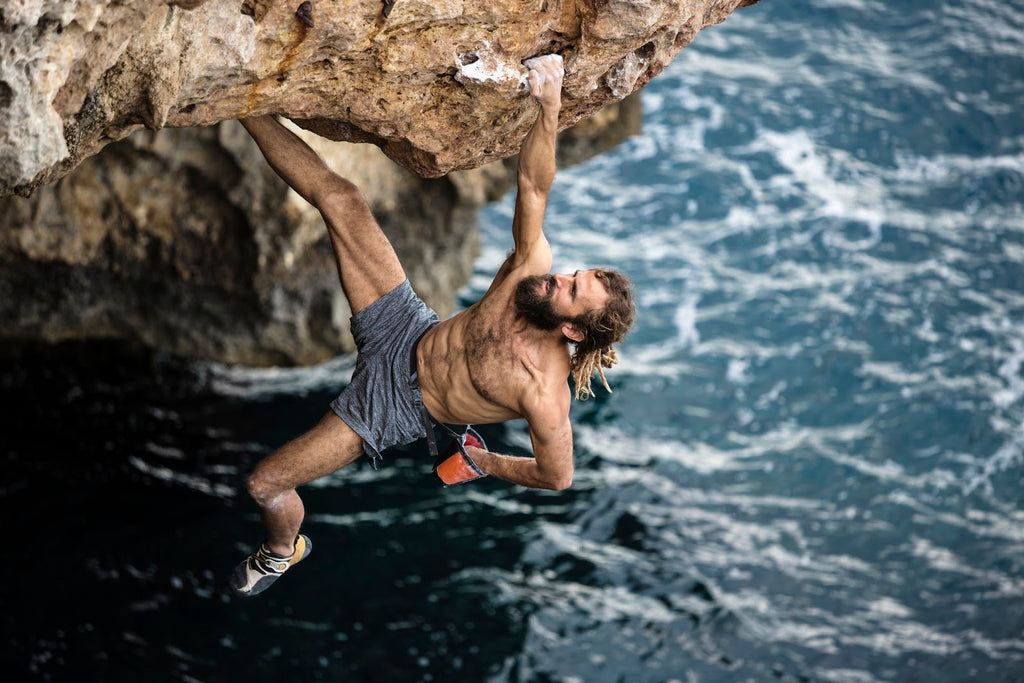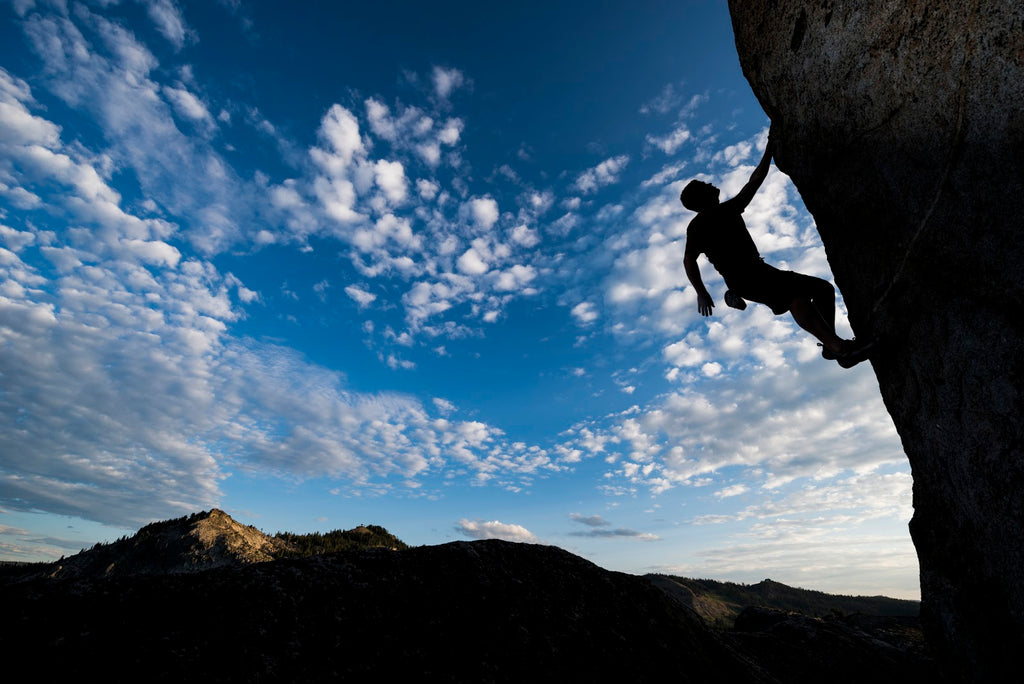When Adrenaline and Skill Come Together: Everything You Need to Know About Free Soloing

You know the phrase no safety net? We use it liberally in everyday language to talk about anything that doesn't have a backup or fallback option. Sometimes, though, the term becomes literal. When that happens in outdoor adventure sports, you're talking about the highest of adrenaline rushes - which absolutely has to be combined with the highest of skill.
Welcome to the world of free soloing.
This is the ultimate test for any rock climber or outdoor aficionado. You climb by yourself, with no safety rope or equipment, relying on nothing but your grip and your experience. One wrong step is not just the end of the climb, it might be the end of you.
Dramatic? Maybe. But then you check out some of the most legendary free solo accomplishments in our history, and you begin to realize just how dangerous it is. Climbing the 3,000 feet of solid rock that make up El Capitan in Yosemite National Park? Check. The icey glacier of Eiger in Switzerland? Sure. The 650 foot overhang in Yosemite literally called Separate Reality? Now we're talking.
All of these climbs are enough to make even otherwise brave people afraid of heights. Of course, free soloing can start small - and you can build your way up to it. This is everything you know about what is in many ways the most extreme of outdoor adventure sports.
What, Exactly, is Free Solo Climbing?
The definition, really, is in its name. You climb. You do it by yourself. And, you are completely free of any safety mechanisms. Any rock climb that fits these parameters is considered part of the game.
In the vast majority of cases, that means climbing outdoors. Yes, you can take on that wall in your indoor gym by yourself as well. But what's the thrill in that? Wouldn't it be much more fun to take on a mighty mountain with nothing but your skill and inherent heroism, a true test of man/woman against nature?
If that's dramatic, that's exactly what this is. In free solo climbing, you're entirely on your own. No partner, no belayer, no equipment designed to keep you safe. Free solo climbing is as much an adventure sport as it is a true test of your ability and willingness to go beyond.
Is it Really that Dangerous?
If you think the above sounds dangerous, you're not alone. It's generally considered one of the most dangerous sports existing in at least some organized fashion. Anything more than 30 feet above the ground is considered a death zone, and many climbs go hundreds and thousands of feet beyond that.
So yes, this is dangerous. It's only something for the most experienced climbers among us. Attempt it without extensive training and preparation, and you're putting your life at significant risk.
Even for the most experienced climbers among us, death is not completely off the radar. Every year, national news outlets report high-profile deaths of some of the more famous climbers. The thirst for ever-greater challenges can quickly become fatal. That's probably why the vast majority of rock climbers are more than happy to stick with assisted adventures through spotters and equipment.
The Ultimate Challenge of Preparation

It's scary. It's dangerous. It's not impossible, though. Hundreds of climbers like you have read the above, and have decided to go for it anyways. They know that with the right amount of preparation, it's possible to scale even the highest mountains without a single piece of safety equipment.
But they don't take on that challenge lightly. The jump from 'regular' rock climbing to free soloing is massive, and requires a significant degree of preparation. Without it, you might never make it up the wall. Many experts go so far as to say that the preparation is actually more important than the execution of the climb itself.
So let's dive into that preparation. Ideally, it starts months if not years before you attempt your first free solo. What follows are some tips from other daredevils that have gone through the same process.
Getting Your Body Ready for Free Soloing
There are no shortcuts. There are no hacks. If you want to attempt your first solo climb, your body has to be at the peak of its powers. That means a healthy mix of both endurance and pure strength.
- Endurance training should include long stretches of continuous exercise that steel your body to avoid getting tired for long stretches of time. Other than typical endurance opportunities like the rowing machine or cross trainer, some free soloers enjoy the challenge of staying on an indoor rock wall for periods of 30 minutes or more in continuous up and down climbs.
- Strength training has to include work for all parts of your muscles. Don't rely on your arms or legs doing the job. Core muscles become just as important, and a well-rounded workout is absolute key. Power workouts, ideally with free weights that train for balance as well as muscle, can be beneficial in building up that strength.
Free soloers also have to hone their technique. This is not the time to be unsure about whether you should pull (no) or push (yes) yourself up where possible. A straight back and the avoidance of locking your knees should be second nature. The technique doesn't differ from any other kind of rock climbing - but unlike those options, you don't have the margin for error.
Focusing Your Mind on the Climb Ahead
When the stakes are this high, body and mind have to go hand-in-hand. Feelings of doubt are misplaced when you balance your weight on an overhang and any false grip could be the end of it. You have to believe in yourself and your ability.
Confidence is built with experience. Even if you've scaled large inclines with a rope, start small as you try your luck without the equipment. In the course of that process, you begin to realize what your limits are, helping you make better choices and get more secure every step of the way.
Confidence in yourself also means confidence in knowing when it's too much. There is no shame in admitting that you've bit off too much and should turn around instead. In fact, it's the better choice than trying to power through and risking your life as a result.
Knowing the Location You're About the Climb
With your body and mind prepared, it's time to learn more about what exactly will await you during the climb. For any solo act, big or small, scout the location. You might even want to think about scaling it with safety rope and other equipment so you know what the rock feels like under your foot as well as what the distance seems to be like when you're climbing up.
Understanding the climb before you start the process in earnest also helps you with a common mental prep tip among some of the best free soloers in the world: think through every possible scenario. Anticipate what that overhang, that hairy incline, or those last 20 feet will feel like. Imagine your thoughts as you look down, halfway up the cliff, to estimate how long you have left.
The key, as most experienced pros will tell you, is to remove as much uncertainty as possible before the actual climb. Once you know the location, you can take some big steps in that direction.
How to Minimize Risks Before and During the Climb
It's never entirely risk-free. After all, that's the allure of this most dangerous type of climb. But if some risks are already inherent, why not make sure that you minimize everything else that might get in the way of a successful climb?
You've already come across a bunch of tips to help with that goal above. Getting your body and mind ready, as well as scouting the location, is absolutely vital. That doesn't mean risk minimization happens only before the climb. What happens as you make your way up can be just as important.
Take the weather as an example. Before you go up, you should be absolutely sure that it will remain dry and ideally warm but not too hot during the entirety of the trip. Another tip: break up the route into various smaller parts, and have a strategy for each. Never go for the fastest, but always for the safest route available.
The Importance of the Right Apparel
In the spirit of risk avoidance, it makes sense to pay special attention to the apparel you'll wear while making your way up. Your shoes are a naturally huge part of that equation. They absolutely need a flexible, grippy sole to adjust to any rocks. At the same time, they need to be comfortable enough to avoid becoming a hindrance on what might be the biggest challenge of your life.
Shoes can make or break the climb, but don't ignore the rest of your clothes, either. They need to be breathable, helping you avoid sweating and regulating your temperature. Overly clingy materials are just as hazardous as wide, floppy outfits that could get caught on the rock face.
Merino wool might just be the perfect fit for this type of adventure. Our merino wool clothing is naturally comfortable, breathable, and helps your body feel just right as it takes on the rock at hand. Our all-natural clothing feels exceptionally cozy and comfortable, allowing you to focus all your senses on what lies ahead (and above) you. At the same time, its ability to regulate your body temperature minimizes any potential risks due to sweating or being cold.
No clothing can turn a novice mountain climber into a free soloing expert. We don't produce magic, and there are no shortcuts. But when you are ready to take on this challenge, we can be there for you to help you make it happen. Browse our collection of wool socks, then prepare yourself to enter the hallowed list of names known throughout the world for their daring adventures.



